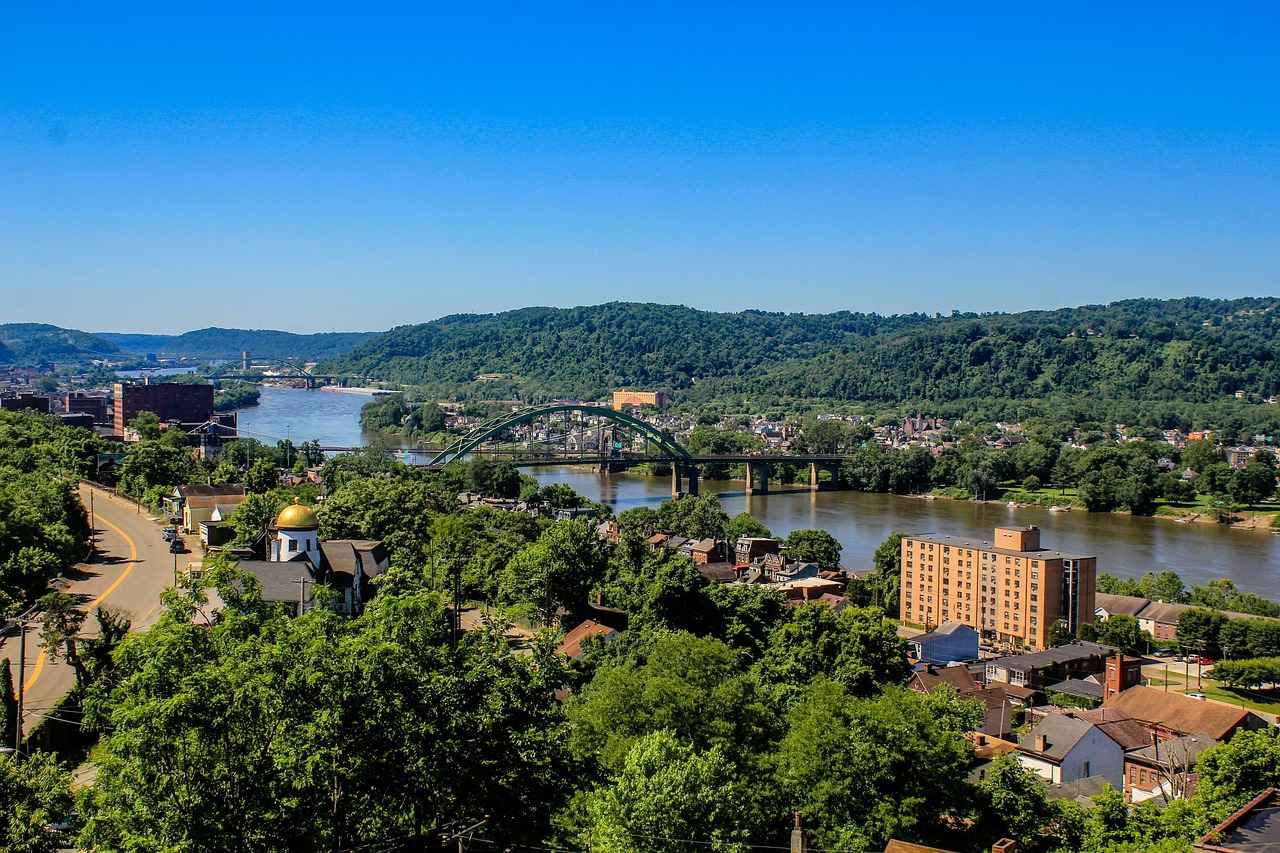This article delves into the evolving political landscape of West Bengal, exploring key trends, challenges, and potential outcomes that could shape the state’s future governance and policies.
The Current Political Landscape
West Bengal’s political environment is vibrant and complex, characterized by a rich history of political activism and diverse party ideologies. The state has experienced significant shifts in power dynamics, particularly in recent elections where traditional party lines have been challenged. Socio-economic factors, such as unemployment and education, play a crucial role in influencing governance.
Key Political Parties in West Bengal
- Trinamool Congress (TMC): The ruling party, led by Mamata Banerjee, focuses on social welfare and development initiatives.
- Bharatiya Janata Party (BJP): A rising force in the state, the BJP aims to expand its influence through strategic outreach and grassroots mobilization.
- Left Front: Historically significant, the Left has seen a decline but continues to advocate for workers’ rights and social justice.
Voter Demographics and Trends
Understanding the demographics of West Bengal is essential for grasping the evolving political landscape. Factors such as age, education, and socio-economic status heavily influence voting behavior. The youth, in particular, are becoming increasingly engaged, driven by issues like employment and education.
Challenges Facing West Bengal’s Political Future
The state faces numerous challenges, including political violence and corruption, which could hinder effective governance. Addressing these issues is critical for ensuring political stability and public trust.
The Impact of National Politics on West Bengal
West Bengal’s political dynamics are also influenced by national trends. Decisions made at the central government level can have significant repercussions on local governance and party strategies.
Future Predictions: What Lies Ahead?
As we look to the future, potential shifts in party power and emerging leaders could redefine West Bengal’s political landscape. Upcoming elections will be pivotal in determining the direction of the state.
Conclusion: Shaping West Bengal’s Political Destiny
In conclusion, the future of West Bengal’s politics will depend heavily on active citizen engagement and informed voting. Understanding the complexities of the political landscape will empower voters to make decisions that shape their governance.

The Current Political Landscape
An Overview of West Bengal’s Political Environment
West Bengal, a state in eastern India, has a rich political history shaped by its cultural diversity and socio-economic challenges. The political environment here is vibrant and dynamic, characterized by a multitude of parties and a highly engaged electorate.
The major political parties in West Bengal include the Trinamool Congress (TMC), the Bharatiya Janata Party (BJP), and the Communist Party of India (Marxist) (CPI(M)). The TMC, led by Chief Minister Mamata Banerjee, has been the dominant force in the state since 2011, focusing on welfare schemes and infrastructure development. However, the BJP has made significant inroads in recent elections, capitalizing on national issues and local sentiments to challenge the TMC’s stronghold.
| Party | Leader | Ideology |
|---|---|---|
| Trinamool Congress | Mamata Banerjee | Regionalism, Welfare |
| Bharatiya Janata Party | JP Nadda | Nationalism, Hindutva |
| Communist Party of India (Marxist) | Sitaram Yechury | Communism, Socialism |
Recent elections in West Bengal have been fiercely contested, with the TMC facing a strong challenge from the BJP in the 2021 assembly elections. The socio-economic factors influencing governance in the state include high levels of unemployment, agricultural distress, and urban migration, which play a crucial role in shaping public opinion and electoral outcomes.
Furthermore, the youth and women voters are becoming increasingly influential in the political arena, driving parties to address their specific concerns. As West Bengal continues to evolve politically, the interplay of these factors will be vital in determining the direction of governance and policy-making in the years to come.
Conclusion: The political landscape of West Bengal is marked by a complex interplay of historical legacies, party dynamics, and socio-economic realities. Understanding these elements is essential for predicting future trends and ensuring effective governance.

Key Political Parties in West Bengal
West Bengal’s political landscape is characterized by a dynamic interplay of several parties, with the Trinamool Congress (TMC) and the Bharatiya Janata Party (BJP) emerging as the dominant forces. This analysis delves into their respective ideologies, leadership styles, and electoral strategies, providing insights into how these elements shape the state’s governance.
| Party | Ideology | Leadership | Electoral Strategy |
|---|---|---|---|
| Trinamool Congress | Regionalism, Social Welfare | Mamata Banerjee | Grassroots Mobilization, Welfare Schemes |
| Bharatiya Janata Party | Hindutva, Nationalism | JP Nadda | National Campaigning, Focus on Development |
| Left Front | Communism, Secularism | Sitaram Yechury | Coalition Building, Ideological Campaigning |
The Trinamool Congress, led by Mamata Banerjee, has positioned itself as a champion of regional interests, focusing on social welfare and development. Its strategy revolves around mobilizing grassroots support through various welfare schemes aimed at the lower and middle classes. This approach has helped the TMC maintain a strong foothold in the state despite challenges.
On the other hand, the Bharatiya Janata Party has been making significant inroads into West Bengal’s political fabric. Under the leadership of JP Nadda, the BJP emphasizes a narrative of nationalism and development. Its electoral strategy includes extensive campaigning at the national level, leveraging the party’s broader appeal to attract voters disillusioned with the TMC.
Additionally, the Left Front, though diminished, continues to advocate for its traditional base, focusing on issues of social justice and workers’ rights. The party’s leadership under Sitaram Yechury seeks to rebuild its influence through coalition politics and a return to its ideological roots.
In conclusion, the political landscape of West Bengal is marked by the contrasting ideologies and strategies of these key parties. Understanding their dynamics is crucial for anticipating future electoral outcomes and the overall governance of the state.
The Trinamool Congress: Strengths and Challenges
The Trinamool Congress (TMC), a dominant political force in West Bengal, has established itself as a significant player in the state’s governance. This section provides a detailed examination of the party’s strengths, the challenges it faces, and how its policies affect the state’s development and public perception.
Strengths of the Trinamool Congress
- Strong Leadership: Under the leadership of Mamata Banerjee, the TMC has cultivated a robust and charismatic presence in West Bengal politics. Her ability to connect with the masses has garnered substantial support.
- Grassroots Mobilization: The party has excelled in grassroots mobilization, effectively engaging with local communities and addressing their issues, which enhances its electoral appeal.
- Welfare Schemes: The implementation of various welfare schemes, such as the Kanyashree Prakalpa and Lakshmir Bhandar, has improved the living standards of many citizens, solidifying the party’s image as a pro-people government.
Challenges Facing the Trinamool Congress
- Political Opposition: The rise of the Bharatiya Janata Party (BJP) poses a significant challenge, as they seek to expand their influence in a state traditionally dominated by the TMC.
- Corruption Allegations: The party has faced scrutiny over allegations of corruption, which can undermine public trust and affect its electoral prospects.
- Economic Disparities: Despite welfare initiatives, economic disparities persist in West Bengal, necessitating more comprehensive policies to address these issues effectively.
Impact on State Development and Public Perception
The policies implemented by the TMC have had a profound impact on West Bengal’s development trajectory. Initiatives aimed at improving education, healthcare, and infrastructure have contributed to a positive public perception, although challenges remain. The party’s ability to navigate these complexities will be crucial for its future success and the overall progress of the state.
In conclusion, while the Trinamool Congress has demonstrated considerable strengths in leadership and policy implementation, it must address ongoing challenges to maintain its position in West Bengal’s evolving political landscape.
Leadership Dynamics within the Trinamool Congress
The leadership style of Mamata Banerjee has significantly influenced the Trinamool Congress (TMC) and its overall electoral success in West Bengal. Known for her dynamic and often unconventional approach, Banerjee has cultivated a leadership model that emphasizes personal connection with the electorate, grassroots mobilization, and a strong narrative of regional pride.
One of the key aspects of her leadership is her ability to forge strong emotional bonds with the voters. Banerjee’s frequent public interactions and her focus on addressing local issues resonate well with the common people, enhancing her image as a leader who genuinely cares about their concerns. This has fostered a sense of loyalty among her supporters, which is crucial for maintaining party cohesion.
Moreover, Banerjee’s leadership style is characterized by a decisive and assertive approach. She is known for making bold policy decisions, often in response to public sentiment. This agility allows the TMC to adapt to changing political landscapes and maintain its relevance in a competitive environment. However, this approach also presents challenges, as it can lead to internal dissent if party members feel sidelined or if decisions are perceived as unilateral.
In terms of electoral strategy, Banerjee’s focus on social welfare programs has been pivotal. Initiatives aimed at improving education, healthcare, and women’s empowerment have not only garnered public support but have also strengthened the party’s position as a champion of the underprivileged. This emphasis on welfare has helped the TMC solidify its base among diverse voter demographics, particularly among women and youth.
However, the challenges of maintaining party unity and addressing dissenting voices within the TMC remain. As the political landscape evolves, Banerjee’s ability to balance her strong leadership with inclusivity will be critical for the party’s future success. The implications of her leadership style extend beyond party cohesion; they directly impact the TMC’s strategies for upcoming elections and its overall standing in West Bengal’s political arena.
In conclusion, Mamata Banerjee’s leadership dynamics within the Trinamool Congress are a blend of personal engagement, assertive decision-making, and a strong focus on social welfare. These elements not only contribute to her electoral success but also pose ongoing challenges for party cohesion as the TMC navigates the complexities of West Bengal’s political landscape.
Recent Policy Initiatives by the Trinamool Congress
The Trinamool Congress (TMC), under the leadership of Mamata Banerjee, has introduced a variety of significant policies aimed at addressing the needs and aspirations of the people of West Bengal. These initiatives are crucial in understanding the party’s approach to governance and their reception among the electorate.
- Health Initiatives: The TMC has launched the Swasti Sathi scheme, providing health insurance coverage to families. This initiative has been well-received, particularly during the COVID-19 pandemic, as it alleviated financial burdens associated with healthcare.
- Education Reforms: The introduction of the Kanyashree Prakalpa aimed at empowering girls through education and financial support has garnered positive feedback. This program not only promotes education but also enhances the socio-economic status of women in the state.
- Agricultural Support: The Krishak Bandhu
- Employment Generation: The TMC government has implemented various job creation initiatives, including skill development programs to equip the youth with necessary skills for the job market. These efforts reflect the party’s commitment to reducing unemployment.
Despite these initiatives, the reception among the electorate has been mixed. While many appreciate the direct benefits of these policies, there are criticisms regarding the implementation and accessibility of these programs. Issues such as bureaucratic hurdles and corruption have been raised, impacting public perception.
Overall, the TMC’s policy initiatives reflect a blend of social welfare and economic development strategies, aimed at enhancing the quality of life for the citizens of West Bengal. As the political landscape evolves, the effectiveness of these policies will continue to shape the electorate’s response and the party’s future electoral prospects.
The Bharatiya Janata Party’s Rise
The political climate in West Bengal has witnessed a significant transformation in recent years, with the Bharatiya Janata Party (BJP) emerging as a formidable contender in a state traditionally dominated by the Trinamool Congress (TMC). This article explores the strategies employed by the BJP to expand its influence, the challenges it faces, and the implications for West Bengal’s political future.
Strategic Approaches to Gain a Foothold
- Grassroots Mobilization: The BJP has focused on building a robust grassroots network, engaging local communities through outreach programs and rallies.
- Targeted Campaigns: The party has tailored its messaging to resonate with various demographics, particularly the youth and women voters.
- Leveraging National Issues: By aligning local narratives with national concerns, the BJP has successfully attracted voters who prioritize broader governance issues.
Challenges Faced by the BJP
- Established Opposition: The TMC’s entrenched presence and strong leadership under Mamata Banerjee pose significant hurdles for the BJP.
- Political Violence: The state has a history of political violence, which can create an atmosphere of fear and deter voter engagement.
- Perception Issues: The BJP must overcome perceptions of being an outsider party in a culturally rich and diverse state.
Implications for West Bengal’s Political Landscape
The rise of the BJP in West Bengal could lead to a more competitive political environment, potentially resulting in policy shifts and new governance strategies. As the party continues to strengthen its base, the dynamics of state politics may evolve, prompting other parties to adapt their approaches to retain voter support.
Conclusion
In summary, the BJP’s increasing influence in West Bengal is a reflection of shifting voter sentiments and strategic political maneuvering. While the party faces considerable challenges, its persistence could reshape the future of governance in the state, making it a focal point for political analysts and citizens alike.

Voter Demographics and Trends
Understanding the voter demographics in West Bengal is crucial for analyzing the political landscape of the state. This section delves into how age, education, and socio-economic status shape voting behavior and party allegiance.
| Demographic Factor | Influence on Voting Behavior | Party Support |
|---|---|---|
| Age | Young voters are increasingly participating in elections, often driven by issues like employment and education. | Higher support for progressive parties like the Trinamool Congress. |
| Education | Education levels correlate with political awareness, leading to informed voting choices. | Support varies, with educated voters leaning towards parties with clear policies. |
| Socio-Economic Status | Lower-income groups often prioritize basic needs, influencing their party choices. | Traditionally support parties that promise welfare schemes. |
- Age: The youth, particularly those under 30, are becoming a significant voting bloc, motivated by issues such as job opportunities and education reform.
- Education: Higher education levels tend to correlate with a preference for parties that advocate for transparency and accountability.
- Socio-Economic Status: Voters from lower socio-economic backgrounds often gravitate towards parties that promise social welfare and economic upliftment.
In summary, the interplay of age, education, and socio-economic status significantly shapes the political dynamics in West Bengal. Understanding these factors is essential for political parties aiming to connect with voters effectively.
The Role of Youth in West Bengal Politics
In recent years, the political landscape of West Bengal has witnessed a remarkable transformation, driven significantly by the increasing involvement of young voters. This demographic, often characterized by their dynamic perspectives and progressive ideals, is poised to play a crucial role in shaping the future electoral outcomes of the state.
Historically, young voters have been viewed as a volatile group, often swayed by trends and social movements. However, their engagement in politics has matured, reflecting a deeper understanding of issues that affect their lives, such as education, employment, and social justice. As they become more politically aware, their preferences are likely to influence party strategies and campaign agendas.
One of the key factors driving this engagement is the rise of social media, which has become a powerful tool for political mobilization. Platforms like Facebook, Twitter, and Instagram allow young voters to express their opinions, organize events, and rally support for causes they believe in. This digital activism has made it easier for them to connect with political leaders and hold them accountable.
Moreover, the educational background of young voters has evolved, with an increasing number pursuing higher education and being exposed to diverse ideologies. This shift has led to a more informed electorate that is less likely to accept traditional political narratives without scrutiny. As a result, political parties must adapt their messaging to resonate with this demographic, focusing on issues like climate change, job creation, and digital rights.
In conclusion, the growing involvement of young voters in West Bengal politics represents a significant shift that could redefine the state’s electoral landscape. Their preferences and values will likely play a pivotal role in determining which parties succeed in future elections. As they continue to engage actively in the political process, it is essential for all stakeholders to recognize and respond to their aspirations and concerns.
Women Voters: A Critical Factor
Women voters have increasingly become a pivotal force in shaping electoral outcomes across the globe, and West Bengal is no exception. As we delve into the significance of this demographic, it is essential to recognize their unique perspectives, concerns, and voting patterns that influence political campaigns and results.
Historically, women have faced numerous challenges in the political arena, often being underrepresented and overlooked by major political parties. However, recent trends indicate a shift, with women emerging as a powerful voting bloc. This transformation is not merely a statistic; it reflects a growing awareness of gender issues and the need for policies that address women’s rights, safety, and economic empowerment.
| Key Issues for Women Voters | Importance in Political Campaigns |
|---|---|
| Safety and Security | Policies addressing violence against women resonate deeply with this demographic. |
| Healthcare Access | Women prioritize health services, especially maternal and reproductive health. |
| Economic Opportunities | Job creation and equal pay initiatives are crucial for women voters. |
| Education | Access to quality education remains a significant concern, influencing voting behavior. |
Political campaigns that actively engage with women’s issues tend to see a marked increase in support from female voters. For instance, candidates who prioritize gender equality and commit to implementing policies that enhance women’s rights often gain a competitive edge. This engagement is not just beneficial for women; it enriches the overall political discourse, fostering a more inclusive environment.
Moreover, the influence of women voters extends beyond mere numbers; it shapes the narrative of political campaigns. When women mobilize and advocate for their interests, they challenge traditional political norms and demand representation that reflects their needs and aspirations.
In conclusion, the role of women voters in West Bengal’s political landscape cannot be overstated. As they continue to assert their influence, it is imperative for political parties to address their concerns genuinely and comprehensively. By doing so, they not only enhance their electoral prospects but also contribute to a more equitable society.

Challenges Facing West Bengal’s Political Future
West Bengal, a state rich in cultural heritage and political history, is currently grappling with several profound challenges that threaten its political stability and governance. Among these, political violence, corruption, and economic disparities stand out as significant obstacles.
- Political Violence: The state has witnessed a troubling pattern of political violence, particularly during election periods. This violence not only disrupts the electoral process but also instills fear among voters, leading to lower participation rates. The cycle of violence often deters potential leaders from emerging, stifling democratic growth.
- Corruption: Corruption remains a pervasive issue in West Bengal, undermining public trust in government institutions. Allegations of mismanagement and bribery have plagued various levels of governance, making it challenging for the administration to implement effective policies. This corruption hampers economic development and exacerbates social inequalities.
- Economic Disparities: The economic landscape of West Bengal is marred by significant disparities. While urban areas like Kolkata thrive, rural regions often struggle with poverty and lack of access to basic services. This imbalance fuels social unrest and dissatisfaction, which can lead to political instability.
Addressing these challenges requires a multifaceted approach. Efforts must be made to promote peaceful political engagement and foster a culture of transparency and accountability. Additionally, targeted economic initiatives that aim to uplift marginalized communities can help bridge the gap between different social strata.
In conclusion, the future of West Bengal’s politics hinges on the ability of its leaders and citizens to confront these pressing challenges head-on. Only through collective action and commitment to democratic principles can the state hope to achieve lasting political stability.

The Impact of National Politics on West Bengal
West Bengal, a state with a rich political history, is significantly influenced by national political trends, policies, and decisions. This dynamic interplay shapes the state’s political landscape, affecting party strategies and voter behavior.
National Trends and Local Implications
National political trends, such as the rise of populism and regionalism, have profound implications for West Bengal. The Trinamool Congress (TMC), the ruling party, has adapted its strategies to resonate with the sentiments of the electorate while countering the growing influence of the Bharatiya Janata Party (BJP). These adaptations often reflect broader national narratives, such as economic development and social justice, which are crucial for local voters.
Policy Decisions and Their Local Resonance
Key national policies, including economic reforms and welfare schemes, directly impact West Bengal’s governance. For instance, the implementation of the Goods and Services Tax (GST) and various social welfare initiatives have created both opportunities and challenges for the state government. The TMC has often positioned itself as a defender of state interests against perceived overreach from the central government, which resonates with local sentiments.
Party Strategies in Response to National Politics
- Electoral Campaigns: Both the TMC and BJP have tailored their electoral campaigns to reflect national issues while addressing local concerns. This dual focus aims to maximize voter engagement.
- Coalition Building: National political alliances influence local party strategies, prompting shifts in coalition dynamics, particularly during elections.
- Voter Mobilization: National narratives around nationalism and state identity are leveraged to mobilize voters, particularly among youth and marginalized communities.
Conclusion
In conclusion, the relationship between national politics and West Bengal’s political dynamics is intricate and multifaceted. As national trends evolve, they will continue to shape party strategies and influence the political landscape, underscoring the importance of understanding this interplay for future electoral outcomes.

Future Predictions: What Lies Ahead?
The political landscape of West Bengal is on the cusp of significant transformation. As we look ahead, several potential scenarios could emerge, reshaping party dynamics and leadership roles in the state. The upcoming elections are pivotal, serving as a litmus test for the ruling party and the opposition alike.
One of the primary factors influencing the political future of West Bengal is the rise of new leadership. Emerging leaders from within established parties may challenge the status quo, offering fresh perspectives and strategies that resonate with the electorate. For instance, the younger generation of politicians is increasingly gaining traction, appealing to the youth demographic that is vital for electoral success.
Moreover, the Trinamool Congress (TMC) and the Bharatiya Janata Party (BJP) are expected to engage in a fierce contest for dominance. The TMC, under the leadership of Mamata Banerjee, will need to address pressing issues such as unemployment and healthcare to maintain its support base. Conversely, the BJP will likely continue to leverage its national presence to attract voters disillusioned with local governance.
Another critical aspect to consider is the impact of socio-economic factors. West Bengal’s diverse population, with varying needs and aspirations, will play a crucial role in shaping the electoral narrative. Economic recovery post-pandemic and addressing inequality will be focal points for any party aiming to win the hearts of the electorate.
As we approach the elections, the potential for political alliances cannot be overlooked. Strategic partnerships between smaller parties could shift the balance of power, making it essential for larger parties to reassess their strategies.
In conclusion, the political future of West Bengal is poised for change, driven by emerging leaders, shifting party dynamics, and the pressing needs of the electorate. The upcoming elections will be crucial in determining the trajectory of governance and policy direction in the state.

Conclusion: Shaping West Bengal’s Political Destiny
In the ever-evolving landscape of West Bengal politics, the significance of active citizen engagement and informed voting cannot be overstated. As we reflect on the key insights discussed, it becomes clear that the future of governance in West Bengal hinges on the participation of its citizens. A vibrant democracy thrives when its people are not only aware of their rights but are also actively involved in the political process.
The importance of informed voting is particularly crucial in a state characterized by diverse political ideologies and complex socio-economic challenges. Voters must equip themselves with knowledge about the candidates, their policies, and the implications of their decisions. This informed approach ensures that citizens can make choices that align with their values and the needs of their communities.
Moreover, active citizen engagement extends beyond the ballot box. It encompasses participation in community discussions, political rallies, and civic organizations. When citizens engage with their local leaders and hold them accountable, they contribute to a more transparent and responsive government. This engagement is essential for addressing pressing issues such as political violence, corruption, and economic disparities that have plagued the state.
As we look ahead, the role of youth and women voters will be pivotal in shaping the political landscape. Their unique perspectives and demands can drive change and influence policy decisions. Encouraging these groups to participate actively in the political process will not only enhance representation but also foster a more inclusive democracy.
In conclusion, the future of West Bengal’s politics relies heavily on the active participation of its citizens. By embracing their role as informed voters and engaged community members, the people of West Bengal can collectively shape a political destiny that reflects their aspirations and values.
Frequently Asked Questions
- What are the major political parties in West Bengal?
The political landscape of West Bengal is primarily dominated by the Trinamool Congress and the Bharatiya Janata Party. Each party has its unique ideologies and strategies that influence their electoral success.
- How does voter demographics affect elections in West Bengal?
Voter demographics, including age, education, and socio-economic status, play a crucial role in shaping electoral outcomes. For instance, young voters are increasingly becoming a significant force, while women voters are also pivotal in determining results.
- What challenges does West Bengal face in its political future?
West Bengal faces several challenges, such as political violence, corruption, and economic disparities. These issues could potentially hinder effective governance and stability in the region.
- How does national politics influence West Bengal?
National political trends and decisions have a direct impact on West Bengal’s political dynamics. The strategies employed by national parties often trickle down and affect local governance and party strategies.
- What can we expect in the future of West Bengal politics?
Future predictions suggest potential shifts in party power and emerging leaders. The upcoming elections will be crucial in determining the direction of West Bengal’s political landscape.


























































